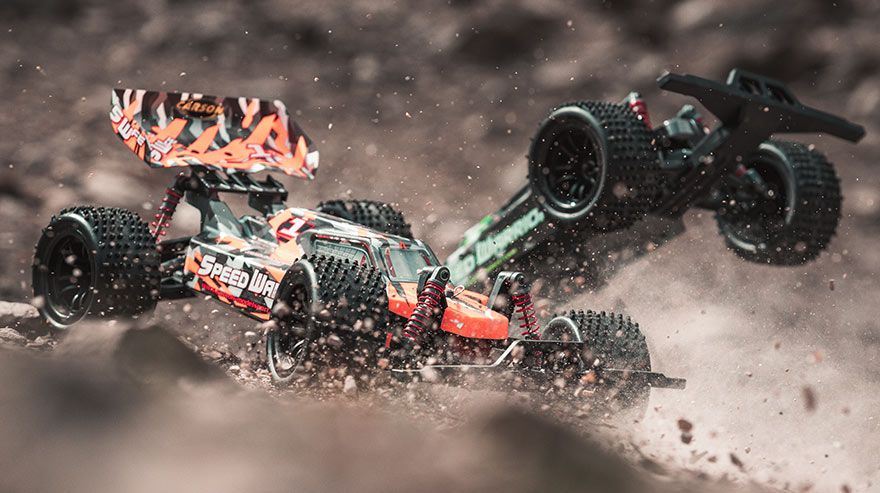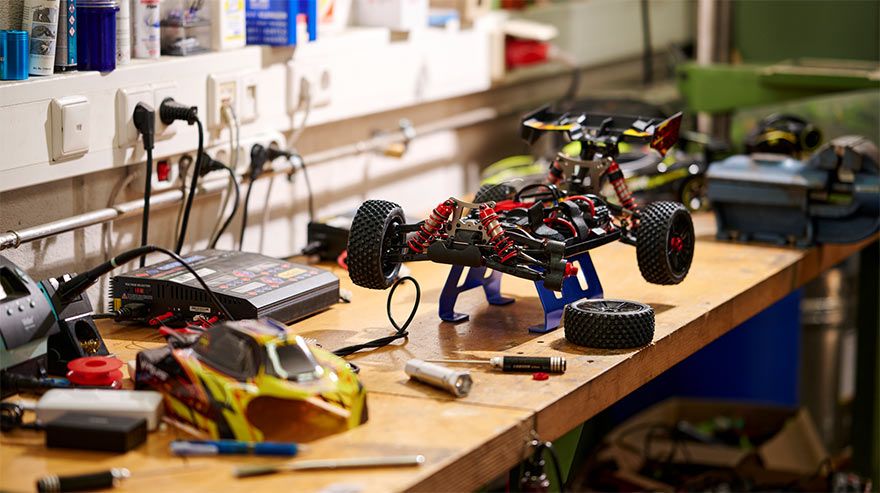Guide: How to correctly charge, store and dispose LiPo batteries
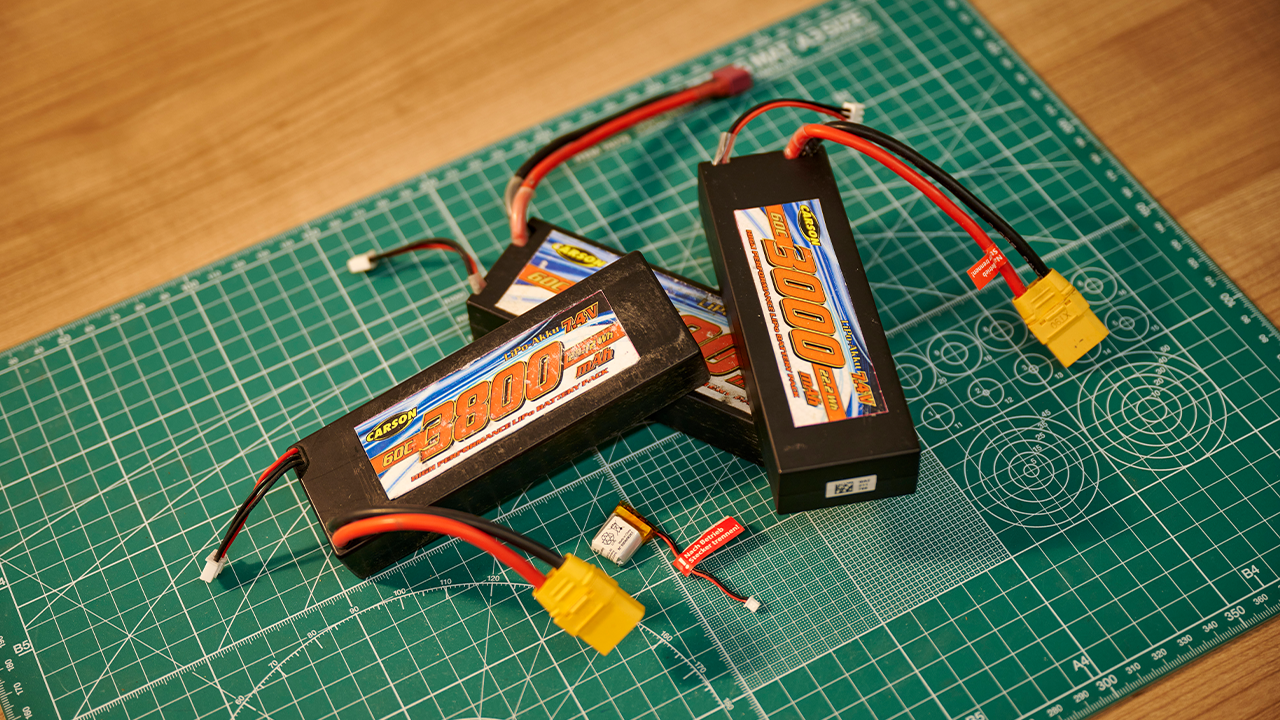
-
By
Oliver K.
A guide on how to charge, store and dispose your LiPo batteries
The battery can be compared to the human heart as It supplies your RC vehicle with energy and therefore movement - without it, nothing works.
Like every human so are RC vehicles different from one another, to power them different types of LiPo batteries have to be used.
In the following article, we will take a closer look at the so-called LiPo battery and provide you with helpful tips on how to charge, store and dispose them.
What is a LiPo battery and how does it work?
The abbreviation "LiPo" stands for "lithium polymer" and describes a specific type of lithium-ion battery. In these, the positive electrode consists of lithium metal oxide and the negative electrode of graphite. A thin polymer-based film acting as the electrolyte is what makes LiPo batteries distinguishable from other lithium-ion batteries.
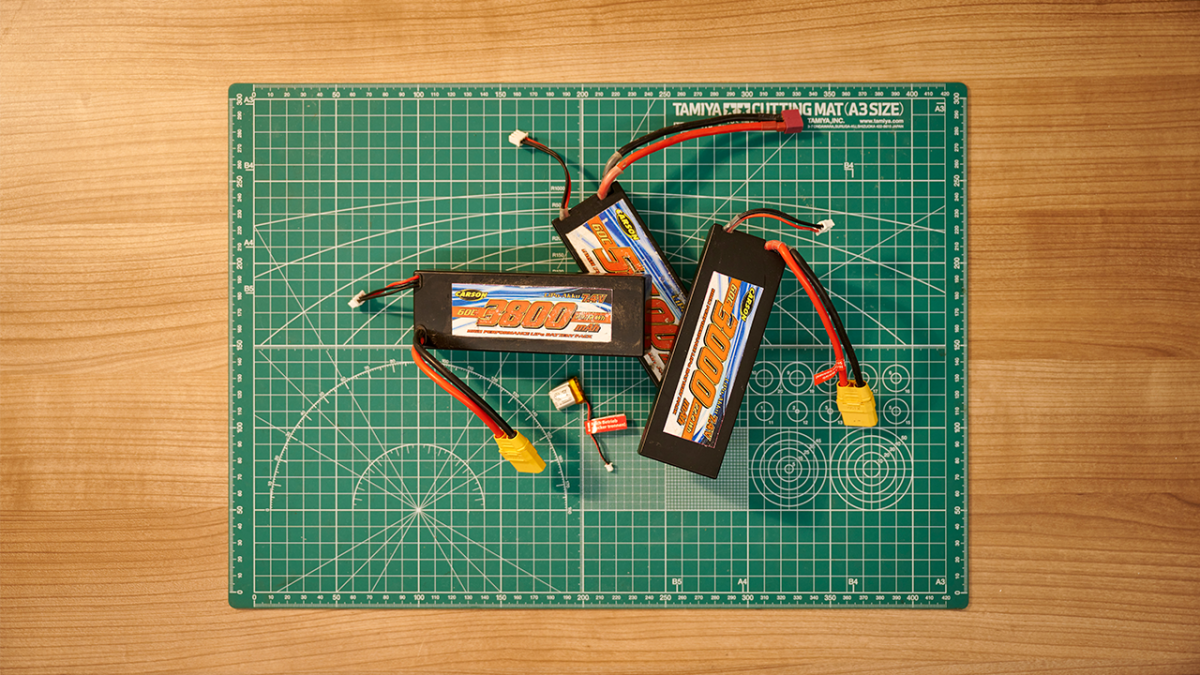
Correct, safe handling of the battery is particularly important. This is because incorrect handling can lead to overheating followed by a possible fire and explosion. In order to prevent such incidents, you should never leave your LiPo battery unattended while having it connected to a charging device.
Attention should be taken if children are around, as these batteries should never be left in the hands of children.
What are the advantages of LiPo batteries for RC models?
LiPo batteries are extremely popular among RC model builders due to the following advantages:
Fast charging
High Energy Storage while keeping a lower weight
No loss of capacity due to "memory effect"
Parallel connection possible
No leakage
Long-term storage possible without energy loss
The total voltage of a LiPo battery or battery pack depends on the number of battery cells. One LiPo cell provides 3.7 V, two cells connected in series provide 7.4 V and a multi-cell pack would have a voltage of 14.8 V. The capacity of a battery is also specified in milliampere hours (mAh) and is not directly linked to the voltage. In our Carson Shop, you are able to find 7.4 V LiPo batteries with 300 mAh, 1300 mAh, 3600 mAh, 4000 mAh and 5400 mAh.
If you are also interested in other types of batteries in addition to LiPo ones, you can have a look at our various other rechargeable and normal batteries in our store @ RC batteries.
Charging and discharging LiPo batteries: How to do it right!
Ready to do it the right way? First, let's have a look at how you should charge and discharge your LiPo battery.
Safety instructions for LiPo charging
To ensure safety when charging LiPo batteries, you should only charge CARSON LiPo, LiIon and LiFe batteries on a fireproof surface and in a CARSON Li-Po "Safety Bag". Always place the LiPo charger on heat-resistant, non-flammable and non-conductive surface.
Charging the LiPo battery
The LiPo battery is charged using the CC-CV method.
The charging process begins with the CC charging phase ("Constant Current"), which then leads into the CV phase ("Constant Voltage"). The battery is therefore initially charged with a constant charging current until it has reached its maximum charging voltage. The voltage then stops increasing and the charging current is continuously reduced.
When charging LiPos, pay attention to these aspects:
- Only start the charging process with the balancer plug inserted
- Choose a high-quality charger (e.g. B.the Expert Charger CARSON LiPo charger with balancer) that matches the number of cells, the required charging current and the connection of the battery
- Never charge two batteries together on the same charger, as different charge states and capacities can cause overcharging and damage the LiPos
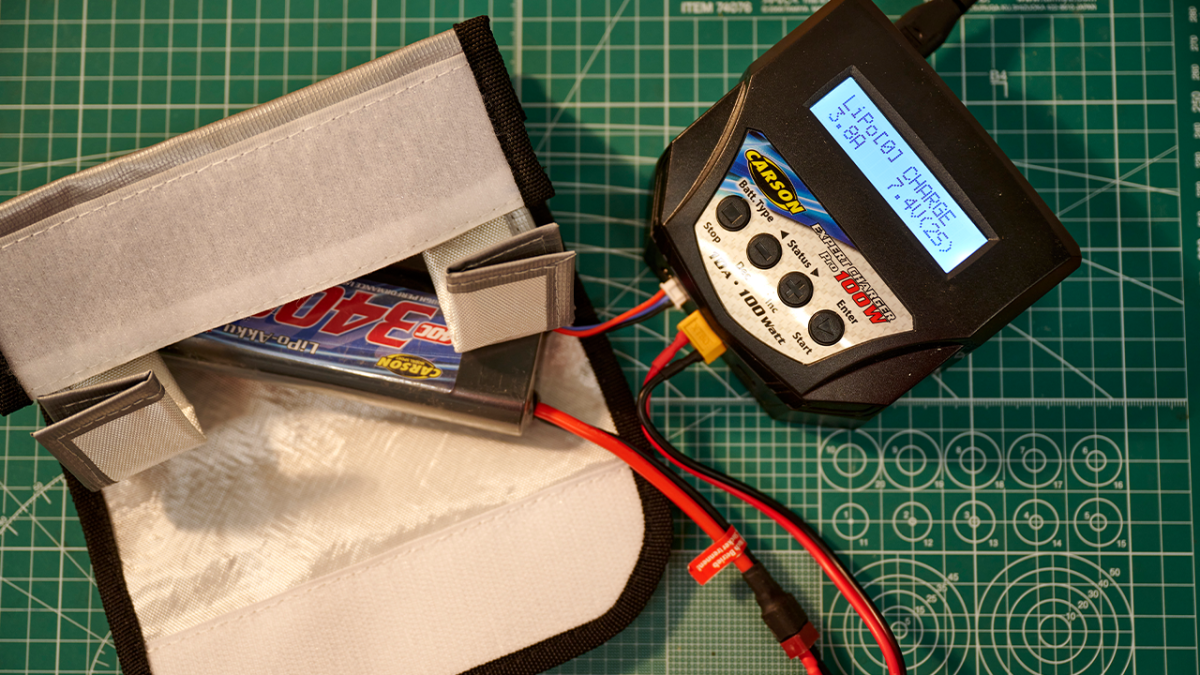
Discharging the LiPo battery
Before you can dispose of your LiPo battery, you must discharge it. Partial discharge can also be useful if you want to store the LiPo battery for longer. To do this, you can use a charger with a discharge function, which can be used to achieve the desired state of charge with pinpoint accuracy.
What is the correct way to store and transport a LiPo battery?
There are also a few things to bear in mind when storing LiPo batteries. If your LiPo battery is due for long-term storage, you should know that it is not a good idea to store the LiPo battery fully charged. The state of charge should be between 20 % and 50 %
At the same time, the voltage must never drop below three volts during LiPo battery storage.
For example, if you want to store a 7.4 V LiPo battery that has two cells, the total voltage must be above six volts. A lower voltage or a deep discharge would render the battery unusable.
The place where you store your LiPo battery should be between 15 °C and 18 °C. For safety reasons, you should store the battery in a safety bag. Such a bag is also essential if you want to transport your LiPo battery. We recommend the "CARSON Li-Po Safe Bag".
Safe charging of a LiPo battery also includes taping the terminals, which reduces the risk of an external short circuit. If you follow these important tips, you can store your LiPo battery correctly and thus extend its service life.
What do I do in an emergency if my LiPo battery is inflated, overheated or damaged?
If you notice that your LiPo battery is overheated, inflated or damaged, you cannot continue to use it under any circumstances!
If children and animals live in your household, you should make sure that they keep their distance from the battery. If you notice the damage while the battery is in a device, you should first remove it carefully - do not use the device under any circumstances! Pack the defective battery safely in a fireproof container and dispose of your LiPo battery properly as soon as possible.
How should I dispose of a LiPo battery?
Are you wondering how and where you can dispose of a damaged or depleted LiPo? We'll be happy to tell you!
Basically, you can dispose of your LiPo battery at a recycling center, hazardous waste collection point or an electronics retailer. Alternatively, you can dispose of the battery in special battery collection boxes. Before doing so, you should discharge the LiPo and insulate the cables. If you are unable to dispose of your LiPo battery immediately, it is essential that you place the defective object in a fireproof container in the meantime.
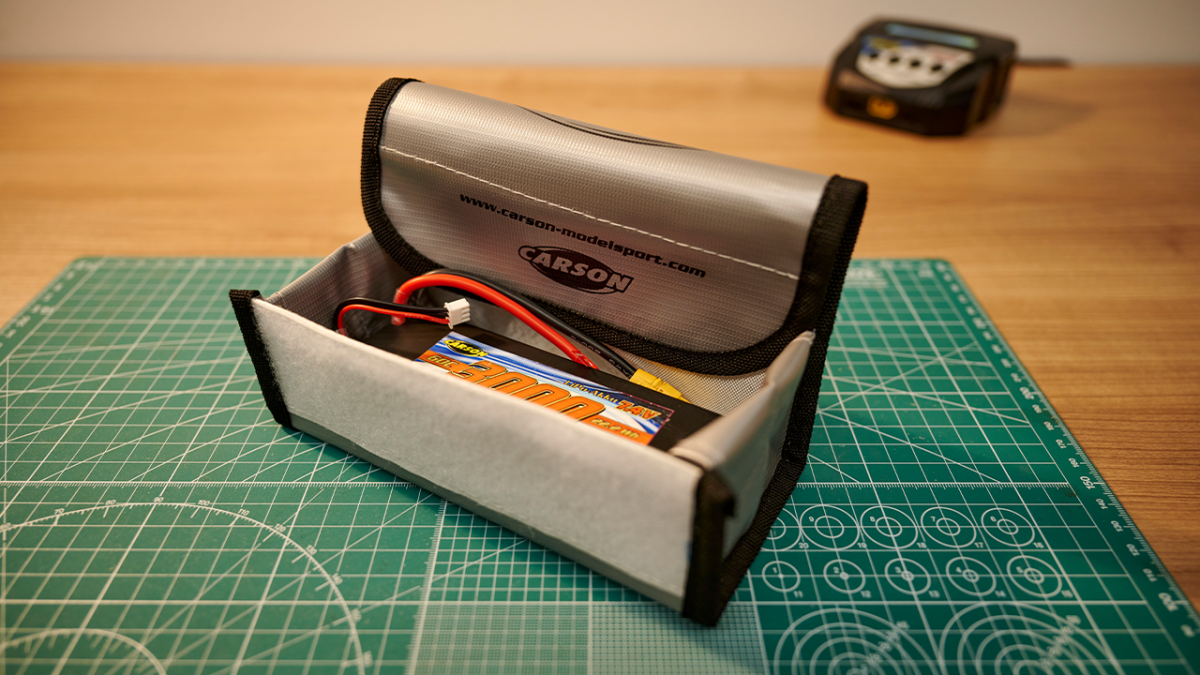
Safe and fit for LiPo batteries with Carson
The risks and dangers posed by LiPo batteries should not be underestimatedHowever, if you exercise caution when charging, discharging, storing, disposing of and transporting LiPo batteries and take the necessary safety precautions, they can be handled very safely.
You still need a model with which you can fully enjoy the performance of your LiPo battery? Then visit our homepage and browse through a huge selection of high-quality (RC) model building products. If you would like to find out more about rechargeable batteries, we would also like to recommend our guide "Charging RC batteries correctly" - enjoy reading it!
FAQ: Frequently asked questions about LiPo batteries
What does LiPo mean?
LiPo is the abbreviation for "Lithium-Polymer".
What is the big advantage of a LiPo battery?
LiPo batteries have a high capacity with a comparatively small size and low weight.
What does a LiPo battery cost?
The price depends, among other things, on the number of cells, the quality and the supplier of the LiPo battery.
Carson currently offers LiPo batteries in a price range from 12 to 55 EUR.
How long does a LiPo battery last?
On average, a LiPo battery "survives" around 150 to 200 charging cycles.
Which is better, LiPo or Li-Ion?
Both battery types have their advantages and disadvantages. While the LiPo battery cannot leak due to the film-like electrolyte, a Li-Ion product, for example, impresses with its excellent durability.














